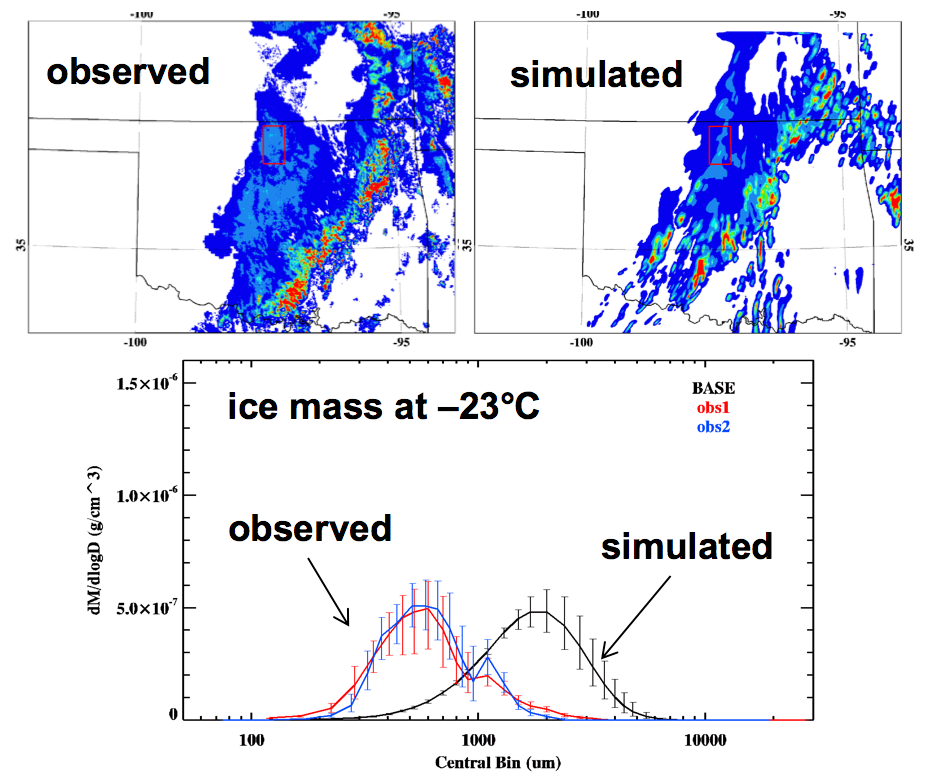An observational target for improving mid-latitude deep convection in cloud and climate models
Submitter:
Fridlind, Ann M. — NASA - Goddard Institute for Space Studies
Area of research:
Cloud-Aerosol-Precipitation Interactions
Journal Reference:
Science
Thunderstorms play a major role in the Earth's energy and water budgets, but the processes that determine outflow crystal sizes remain poorly understood and therefore poorly represented in cloud and climate models. Here we use observations to show that ice crystal sizes coming out of thunderstorms are commonly far too large, providing robust guidance for future improvements in cloud and climate models.
Impact
We use observations from the Mid-latitude Continental Convective Cloud Experiment (MC3E) during a well-observed thunderstorm system to (i) provide better inputs for simulating cloud processes and (ii) provide an observational target to establish correct simulation of outflow ice crystal size for that system. We demonstrate that the inputs and outputs provide a uniquely robust combined data set for testing and improving cloud and climate models.
Summary
We derive hygroscopic aerosol size distribution input profiles from ground-based and airborne measurements for six convection case studies observed during MC3E over Oklahoma. We demonstrate use of an aerosol input profile in simulations of the only well-observed MC3E case study that produced extensive stratiform outflow, on 20 May, 2011. At elevations well-sampled by aircraft between −11 and −23 degrees Celsius over widespread stratiform rain, ice crystal number concentrations were consistently dominated by a single mode near ∼400 μm in randomly oriented maximum dimension (Dmax). The ice mass at −23 degrees Celsius is primarily in a closely collocated mode, whereas a mass mode near Dmax ∼1000 μm becomes dominant with decreasing elevation to the −11 degree Celsius level, consistent with possible aggregation during sedimentation. However, simulations with and without observation-based aerosol inputs systematically over-predict mass peak Dmax by a factor of 3–5 and under-predict ice number concentration by a factor of 4–10. Previously reported simulations with both two-moment and size-resolved microphysics have shown biases of a similar nature. The observed ice properties are notably similar to those reported from recent tropical measurements. Based on several lines of evidence, we speculate that updraft microphysical pathways determining outflow properties in the 20 May case could be similar to a tropical regime, perhaps associated with warm-temperature ice multiplication that is not well understood or well represented in models.


